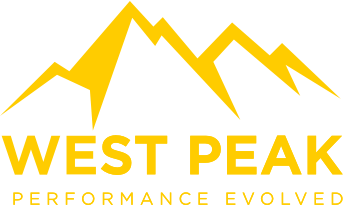Beyond KPIs: How to Measure What Actually Drives Performance
The business world is obsessed with metrics – KPIs, OKRs, targets, dashboards. And while these tools offer visibility, they often miss the bigger picture.
The real driver of business success isn’t buried in a spreadsheet, it’s in the way your people think, collaborate, and lead.
You don’t scale by staring at numbers. You scale by understanding what drives them.
The Problem with Traditional KPIs
Key Performance Indicators (KPIs) were designed to track output. Revenue. Conversion rates. Client churn. And while they’re essential, they only tell part of the story.
The flaw?
KPIs are lagging indicators. By the time they reveal a problem, the damage is already done. They tell you what happened, not why it happened.
And more dangerously, they can promote short-termism. When leaders are under pressure to hit KPIs, they often prioritise numbers over people.
Performance might spike. But so does turnover, disengagement, and burnout.
What Actually Drives Performance
The best-performing teams don’t obsess over KPIs, they focus on the inputs that drive them. These inputs are harder to measure, but far more powerful. Think:
- Leadership behaviours
- Team trust and cohesion
- Decision-making quality
- Psychological safety
- Purpose alignment
These are the upstream factors. If you get them right, the numbers follow.

Beyond KPIs: What You Should Be Measuring Instead
Let’s reframe performance measurement. Here are the metrics that matter—and how to track them:
- Leadership Effectiveness
If your leaders aren’t growing, neither is your business.
Ask:
- Are your leaders building trust or managing through fear?
- Do they foster accountability or micromanage?
- Are they equipping their teams to thrive?
How to measure it:
- 360-degree feedback
- Leadership scorecards (like our own LCS)
Team sentiment surveys
- Team Trust & Psychological Safety
Google’s Project Aristotle found that psychological safety is the #1 predictor of high-performing teams.
Without it, there’s no innovation. No risk-taking. No honest feedback.
How to measure it:
- Anonymous pulse surveys
- Psychological safety assessments
- Peer-to-peer feedback loops

- Decision Velocity
High-growth organisations don’t always make perfect decisions. But they make them fast, and course-correct quickly.
Slow decisions are silent killers. They stall growth, frustrate teams, and miss market opportunities.
How to measure it:
- Decision turnaround time
- Number of decisions escalated vs. resolved at the team level
- Retrospective assessments on decision outcomes
- Cultural Alignment
Culture isn’t what you say, it’s what people experience. And when culture drifts, performance suffers.
How to measure it:
- Culture audit tools
- Internal values alignment surveys
- Qualitative exit interview data
- Strategic Clarity
Teams perform better when they understand where they’re going, and why.
Clarity reduces noise and unlocks focus.
How to measure it:
- Quarterly strategy alignment surveys
- % of team members who can articulate the business mission and goals
- Engagement with internal strategic communications
Why This Matters: The Cost of Getting It Wrong
Misplaced focus on KPIs can lead to:
- Burnout: Constant pressure without meaningful work
- Attrition: High-performers leaving due to misalignment or poor leadership
- Missed opportunities: Innovation stifled by fear or confusion
- Short-term wins, long-term losses
When you measure only output, you ignore the ecosystem that produces it. And when that ecosystem breaks, no KPI will save you.
How Great Companies Measure What Matters
✦ Netflix
They famously measure freedom and responsibility, not just output. Their Talent Density concept focuses on retaining only the most effective people, and trusting them to deliver.
✦ Atlassian
They track team health metrics like balance, shared understanding, and team rituals, not just delivery speed.
✦ West Peak Clients
Many of our partner organisations have transitioned from purely metrics-based reviews to capability scorecards and development pathways that prioritise long-term leadership growth. The result? Increased resilience, sharper strategic thinking, and stronger succession pipelines.

Practical Next Steps for Leaders
Here’s how to start shifting from traditional KPIs to meaningful performance metrics:
- Audit Your Current Metrics
- Are you measuring outputs or inputs?
- Are your metrics aligned with your business’s long-term strategy?
- Introduce People-First Metrics
- Use tools like the Leadership Capability Scorecard to assess strengths and gaps.
- Train Leaders to Think Upstream
- Help your managers understand that what they measure drives behaviour.
- Build Measurement into Culture
- Make feedback and measurement part of how your team operates, not just a quarterly event.
- Balance Quant & Qual
- Numbers matter, but so do stories. Combine hard data with lived experience.
Final Word: Redefining Success
If you want high performance that lasts, stop chasing KPIs in isolation.
Start measuring what makes your people thrive.
The leaders who win long-term don’t just track performance.
They cultivate it.
Fun Fact
A Harvard Business Review study found that companies with strong employee experience metrics outperformed their peers in stock performance by 122% over a 6-year period. Coincidence? We think not.
Subscribe to our Podcast
Hosted by our very own Ben Stocken and Benjamin Wade our ‘How They Lead’ podcast aims to evolve the way people perform in leadership roles by showcasing a variety of high performance interviews with people from Patrick Kershaw from The RAF Red Arrows to CEO’s like Steve Phillips who help large brands like Pepsi, Mars and Unilever.
Get one step ahead – Click below to subscribe.










